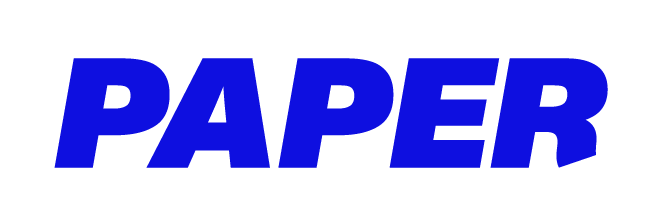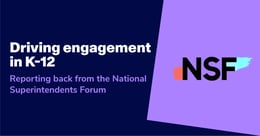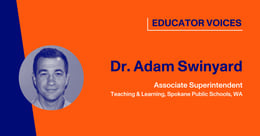
Mitigate Learning Loss With Ginny Davis of Piedmont Hills High School
Ginny Davis is a Principal at Piedmont Hills High School (PHHS) at East Side Union High School District (ESUHSD) in San Jose, California. She is currently in her second year as Principal at PHHS. Prior to this, she spent fourteen years as both a teacher and assistant principal within her school district, including PHHS.
The Paper team had the pleasure of acquainting ourselves with Ginny last year when she found out about us through her daughter, whose school had implemented Paper. Ginny got to see our platform in action when her daughter used it for homework help. After she called our team to learn more, we happily helped her in implementing the platform at her own school so her students could access 24/7 academic support.
Distance Learning at PHHS
This year, with the school closed, we asked Ginny how Paper is fitting in with PHHS’ switch to distance learning: “Especially in a time like this, where students aren’t getting one-on-one help from their teachers, I think an online system like Paper is actually really beneficial and helpful to the students; they have another source of getting that extra help.”
We also asked Ginny how she is personally coping with being a principal from a distance. “I’m sleeping in a little more,” she joked, before proceeding to tell us about all the work she’s been juggling since her district launched its distance learning plan on March 30th. Something she’s found herself doing a lot more of is communicating closely with parents about what distance learning entails, and answering the questions and concerns that arise day by day. As for how her own family is managing their new routine, she said, "We start everything at 9 AM, working 1 hour at a time, about 4 hrs a day. I find myself as a parent, needing that 1hr off as well."
Mitigating Learning Losses
Like with most districts, equity is going to be an essential factor to consider in distance learning. ESUHSD is handing out meals and devices to all students that need them. Specifically, Ginny drew attention to the related concern of student regression and learning losses. "Access has been the biggest piece, with some students doing well and others struggling."
Another big worry is that without the structured environment of classrooms, and the “group component” of instruction, a lot of students’ learning will take a hit. “The routine for students is broken. Kids could be playing video games until 4 AM. Mitigating students turning to summer mode and keeping them on some type of schedule is going to be crucial during this time.”
For other students though, Ginny mentioned, it might help to have some time to learn without distractions, at their own pace: “I have a friend whose son has always hated going to school and never wants to go, and now it’s his moment; his time to shine.”
Keeping its manifold implications in mind, the grading policy that the district has chosen is keeping a “grade floor.” This means that whatever a student’s grade was prior to school closures is the lowest grade that students can achieve; grades can only go higher. Ginny described the rationale behind this policy: “With this comes its pros and cons, as students who are doing well may not feel the need to continue studying, but it also accommodates the students who may have other things going on in their life like working part-time, taking care of siblings and family members who may be sick, and having limited internet access.”
Avoiding as much student regression as possible will be one of the most critical aspects as districts conduct distance learning. When schools reopen, accounting for student learning loss will need hefty consideration. Ginny explained, “After speaking with my teachers, specifically about Math as it’s a skill-based course, I’m encouraging them to review and reinforce old content, rather than teach any new content. They also have to go into the next school year with the understanding that the students did not have the last quarter of this school year.”
PHHS educators know that students staying home for an extended period will have lasting impacts on their learning. Ginny said that the “catching up” from closures could take up to 2-3 years. Moving forward, she thinks an emergency learning plan will be something that every district will need to have in their pocket, to prevent the kind of loss in instructional time we saw this time around.
While educators know that the effects of school closures on the educational system will persist long after schools reopen, it’s important to look at the strides that have already been made in face of the crisis. Ginny advised that educators should "use this as an opportunity to take a step back and assess what is really important, to get down to foundational questions of what our purpose is in education.”






